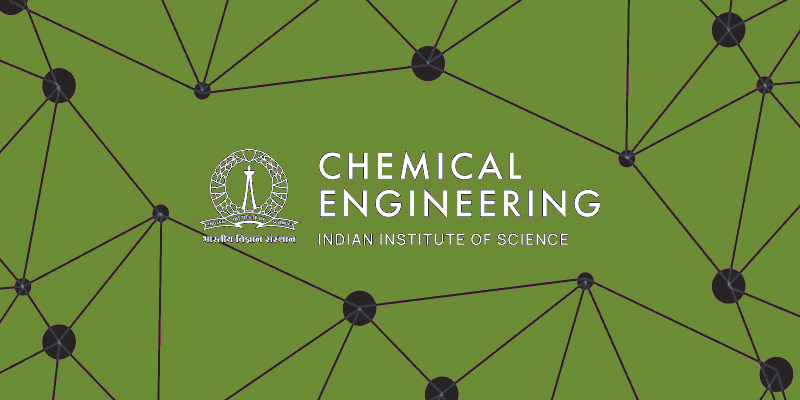June 6, 2024 -- June 6, 2024

Speaker: Anshaj Ronghe, Department of Chemical Engineering, IISc, Bengaluru
Venue: Seminar Hall, Chemical Engineering
Date & Time: 06th June 2024 (Thursday)at 4 pm
Venue: Seminar Hall, Chemical Engineering
Amidst the plethora of separation processes used in chemical industries, water purification and bioethanol production are important, given their critical role in mitigating water scarcity and developing sustainable energy solutions. While conventional membrane-based separation techniques are prevalent, they are typically energy-intensive, with their performance contingent on the choice of the membrane. Consequently, the quest for more efficient alternatives has prompted the exploration of 2D materials, acclaimed for their intrinsic high permeability and tunable selectivity. In this thesis, we employ molecular dynamics simulations to study spontaneous evaporation processes occurring through nanoporous graphene, which has emerged as a novel separation platform due to its atomic thickness and high mechanical strength. Furthermore, the pore size distribution and chemistry of nanoporous graphene can be precisely controlled using various synthesis techniques. The first part of the thesis investigates the evaporation of pure water and salt solutions through graphene nanopores with various chemical functionalizations, which is crucial for assessing its potential for low-energy water purification technologies. In the latter part, we explore the separation of ethanol-water mixtures, a process vital to bioethanol production methods widely used in the chemical industries.
For water evaporating through the nanoporous graphene, we observed a significant enhancement in evaporation flux relative to the bare liquid-vapor interface. This enhancement increases with the decreasing pore size and is particularly notable for small, 3.4 Å hydroxyl-terminated nanopores where an enhancement greater than 13 is achieved. These results, corroborated by experiments, represent the most significant enhancements reported to date. We extended these findings to investigate the efficacy of nanoporous graphene in enhancing water evaporation flux from different salt solutions (LiCl, NaCl, and KCl). Cation-π interactions between ions and the nanoporous graphene surface significantly influenced ion populations near the nanopore. This resulted in the highest evaporation flux from KCl solutions, followed by NaCl and LiCl solutions, with the differences diminishing at lower concentrations. Relative to the bare liquid-vapor interface, the 4.5 Å hydroxyl-terminated nanopores exhibited 7-11-fold higher evaporation flux, with an enhancement of 10.8 obtained for 0.6 M NaCl solution, closely resembling seawater compositions. Functionalized nanopores were found to induce rapid water-water hydrogen bond dynamics and reduce surface tension at the liquid-vapor interface, thereby lowering the free energy barrier for water evaporation with a negligible effect on ion hydration dynamics.
With the enhanced water evaporation fluxes observed from graphene nanopores, we extended our simulations to study its potential for separating ethanol-water mixtures. For 25-75 mol% ethanol mixtures, separation factors exceeding 100 could be achieved using 5.5 Å hydrogen-terminated pores. This was due to the strong affinity of ethanol molecules towards the nanopores, resulting in a local deficiency of water molecules to render the pores preferential towards ethanol permeation. Interestingly, for bioethanol production from fermentation broths containing around 4.2 mol% ethanol, the evaporation flux of ethanol exceeded that from the traditional membranes by a factor of 100, with an unusually high separation factor of 132.2. Significantly, these pores were also found to yield an infinite separation factor and ethanol evaporation flux on the order of 107 gm m-2 h-1 for azeotropic separation of ethanol-water mixtures. The insights obtained from our molecular dynamics simulations underscore the potential of nanoporous graphene as an effective membrane for evaporation-based water purification and bioethanol production. Despite the challenges associated with the large-scale production of these membranes and scaling up of the evaporation-based separation processes, our findings suggest that nanoporous graphene can potentially be used to develop energy-efficient separation methods.